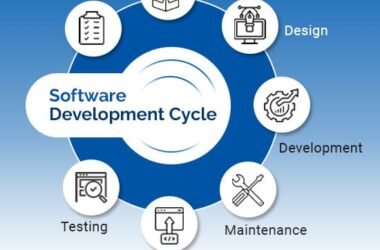Software testing appeared in the limelight with the onset of software development. The software testing process involves evaluating and verifying that software works in tandem with the idea behind its creation. Automation testing aims to prevent bugs, reduce development costs and enhance the performance of software.
Software testing is vital because some malicious bugs may cause monetary loss. Not only this, software defects can even tarnish a brand’s reputation which may lead to infuriated customers. In extreme cases, software bugs can debase interconnectedness and cause serious malfunctions.
Software testing can be classified into two areas namely, Manual Testing.
What is Manual Testing?
As the name suggests, manual testing refers to the process of testing software manually. In this, testers keep themselves in the shoes of the end-users. They ensure all the features of the software are intact and are in working condition. They perform testing without using any automation tools and generate the reports manually.
Manual testing can also be called exploratory testing as in this testers explore software for suspecting errors. Meticulous software testing ensures reliability, security, and enhanced performance consequently, saving time and costs.
What is Automation Testing?
Automation Testing refers to the process of testing software and locating bugs using automation tools like Selenium testing, Appium, LambdaTest, and more. These tools facilitate the process of executing test scripts and generating results. Automation Testing is used to quickly and repeatedly re-run the software that was previously performed manually.
Software testing is also known as Test Automation. Apart from detecting bugs in the software, this process aims to improve test coverage and accuracy. It also saves considerable time and money.
Differences between Manual Testing and Automation Testing
Given here are some of the differences between Manual Testing and Automation Testing that readers can go through to expand their knowledge.
| Parameters | Manual Testing | Automation Testing |
| Processing Time | Manual Testing consumes considerable time and resources. | Automation Testing saves time and is comparatively faster. |
| Reliability | Manual Testing is inaccurate and leaves room for human errors. | Automation Testing is performed utilizing special tools and scripts. |
| Cost-Effective | Not cost-effective for high-volume regression. | Not cost-effective for low-volume regression. |
| Initial Investment | Lower initial investment | Higher initial investment |
| UI change impact | Even significant UI changes won’t hinder manual testers. | Even small UI changes will impact automation testing. |
| Test Report Visibility | In this process, test reports are not instantly available. | In this process, all stakeholders can check test execution results. |
| Performance Testing | In this process, performance testing is not practically possible. | Automation tools need to test performance tests like Load Testing, Stress Testing, and Spike Testing. |
| Parallel Execution | Manual Testing can be executed parallelly but it would cut holes in the pockets. | Automation Testing can be executed parallelly on different platforms thus, reducing test execution time. |
| Batch Testing | This type of testing can’t be batched. | One can batch multiple test scripts in this type of testing. |
| Programming Language | One can proceed with manual testing without having any prior knowledge of programming languages. | One can not proceed with automation testing without having any prior knowledge of programming languages. |
| Test Design | Manual testers do not drive design into the coding process. | Automated testers enforce test-driven development design. |
Software Testing is a huge domain. Both methods have their unique qualities and limitations. Choosing one between them might be an arduous task. However, it all depends on project requirements, time, and budget. There are times when automation tools can’t help us and then we need to resort to Manual Testing. Hence, it becomes extremely important to make sound decisions after going through all the relevant information.








